|
Advertisement / Annons: |
My old astronomy project:
|
Content: |
My old astro equipment1: Camera and lensesThis is something that I wrote 2006, maybe something still of interest to catch up. How to build a cheap computerized astrograph? An easy and cheap astronomy photography equipment can easily be built by standard components and software available for free download. Here is my idea and how I have done it. 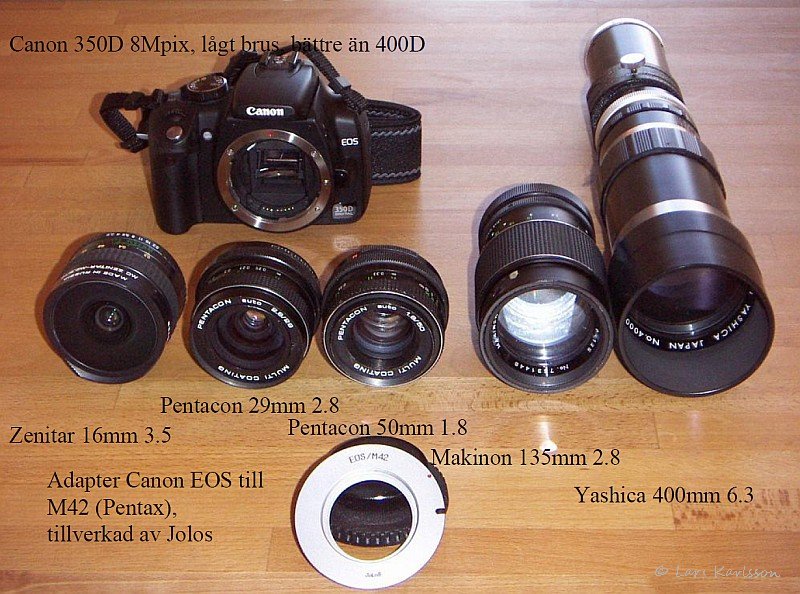
For those of you who have not yet bought a digital camera:
|
| Go Back to content |
3: EQ4 Mount, minimized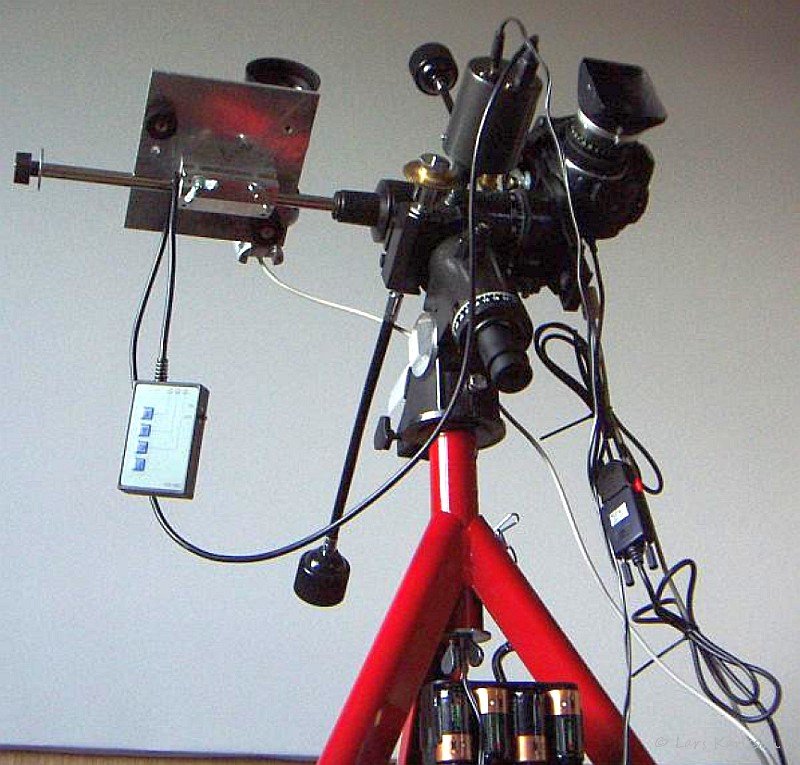
When only doing astronomy photography and not visual it is not as necessary that the tripod is high. The lower part of the mount can replaced with a Biltema trestle, 6 Euro ! Very stable, withstand 1.5 ton! Weight about 2 kilogram.
|
4: Controlling the mount with a guide camera
The window in K3CCDTools (this is the free version) above.
A star are locked and the driving deviation is registered in RA and Dec axis. Lens focal length to guide camera should at the same pixel size of both cameras be the double focal length as main telescope. If your application supports sub-pixel it can be of shorter focal length. Web cameras have an exposure time of 1/5 seconds or less, there is high demands on the lens opening, quality can, however, be lower when you only make use of the central areas. How to control the EQ4 mount isn't solved yet
|
5: A test on Andromeda galaxy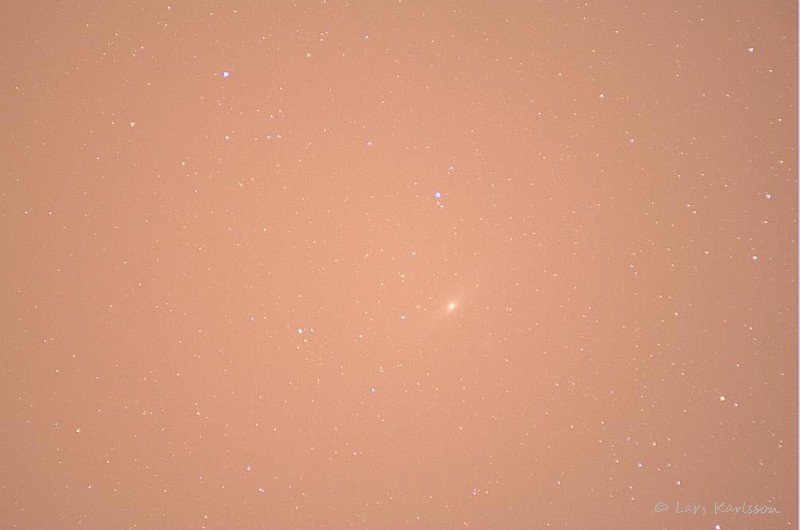
First Light, the Andromeda galaxy, one of 35 raw images photographed from my balcony. Thinner clouds illuminated by highways trail lighting. Exposure 1 minute lens 135mm aperture 2.8, ISO 800. Angle 9x6 degrees. Results: Well you see it, in any case it is a galaxy. The next step is to fix a darker place!
|
6: Image calibration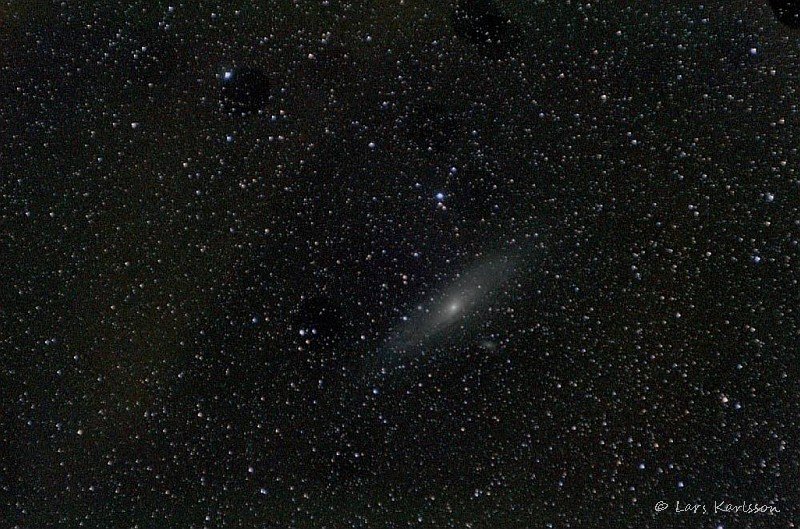
Image calibration:
As you can see, the result is quite impressive for being taken from a balcony near the city, right? Image Processing done with IRIS
|
7: An overview of the constituent blocksSorry, drawings only in Swedish, but not difficult to understand. 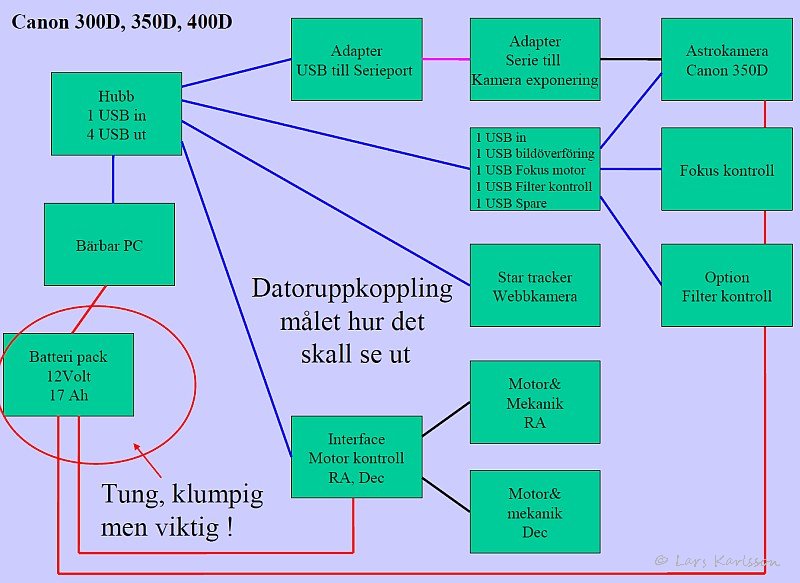
This is the setup for older cameras without live-view, Canon 350D, Canon 400D. 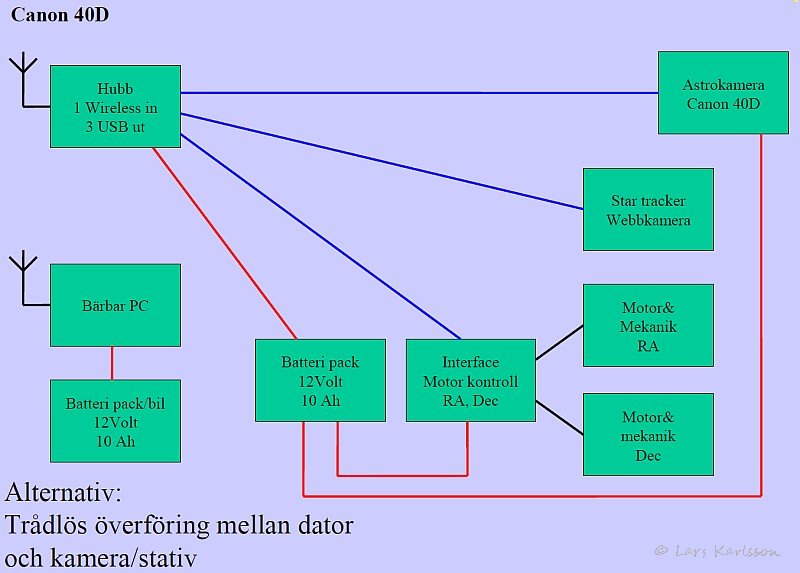
This is the setup for newer cameras with live-view, Canon 40D, Canon 5D Mark II. Today replaced with a more modern construction, computer controlled EQ6 mount.
|
| Go Back |
